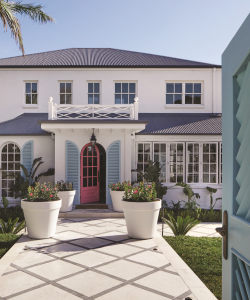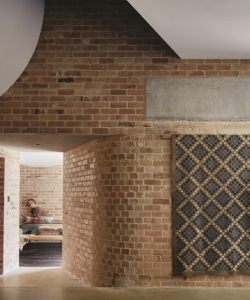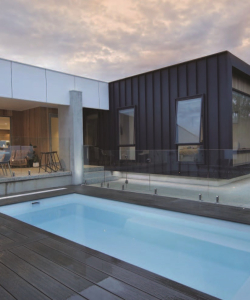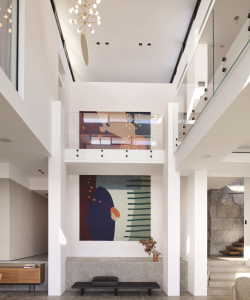A successful renovation is all about planning and having a good idea what you want before you start – and of course to set yourself a budget. Here are six top tips from the team from Midland Brick to get you on the right path… or patio, or driveway!
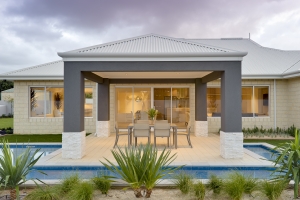
1. Ask Yourself What You Really Want
Going into an outdoor renovation without a solid idea of what you want can be stressful – and costly. Before beginning work, ask yourself the following questions:
A) What primary and secondary uses will the space be used for?
For instance, if you have children your backyard might primarily be used as their playground – but then you’d also like to entertain friends there every now and then, and you’d like to have a veggie patch. On the other hand, if you’re a keen gardener, your primary focus might be on simply having it look lovely, with room to plant your favourite trees and flowers.
Answers to this question will help you determine the larger aspects you need – such as paved areas, paths, garden beds and grassed areas.
B) What “look” most appeals to you for your outdoor area?
Are you after a traditional Australian backyard, with lots of grass and a Hills Hoist, or are you into a more modern, architectural affair? This is where sites like Pinterest come in handy – you can browse different garden themes to find which is right for you, and you can then use that to explain to your designer, contractor or retailer exactly what you want.
Other garden themes to consider include formal, Asian-inspired, cottage garden, modern or minimalist.
C) What is the “lay of your land”?
This is probably one of the most important considerations of outdoor design. Does your land slope, or change heights quickly, or is it relatively flat? Is the neighbouring land level higher than yours? A “yes” to any of these questions would indicate that you need a retaining wall, or could do with a terraced effect (different levels with a step or steps in between).
Work through these questions and keep notes and plans to follow, or to discuss with a designer or contractor.
2. Taking the Outdoors Inside
With our great climate and love of the outdoors, the practicality of being able to move from inside to outside in one easy movement is important. When planning an outdoor area, start your thinking and planning from the inside.
A) Making it a smooth move
For your outdoor area, choose a paver of a similar colour to the interior flooring. This coordination will make both spaces appear larger and provide a smooth, visual flow. Make sure the outdoor paving covers as large an area as possible – there is nothing nicer than having the space for an outdoor dining table and chairs, as well as space for reclining outdoor furniture. The 2015 Telethon Home is a perfect example of this, having used Midland Brick Boulevard pavers.
B) A focal point
As you would inside, consider adding a point of interest – for instance, an interesting garden sculpture or large, statement pot plant.
C) Colour choice
Latest colour trends can often lead you in the wrong direction for your landscaping. It’s important to consider what suits your individual look, rather than simply choosing what’s in fashion. Remember, you can’t change paving as easily as a coat of paint or a new rug, so take your time and take samples home to look at in-situ.
D) Water works
The sound of water can be soothing on a hot summer day and it can be as simple as a gentle trickle. A small fountain doesn’t have to be a pain to install. A good rule of thumb to remember: for smaller spaces, the plainer you make your water feature, the more impact it will have.
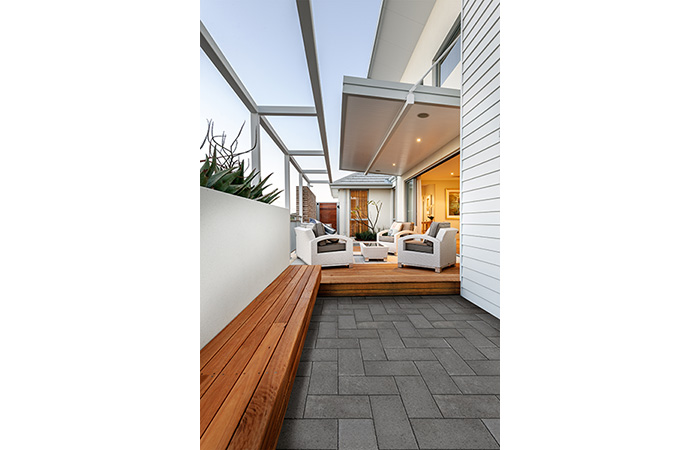
3. Paving Design Tips
Paths direct traffic and reduce the amount of dirt carried into the home. A meandering path encourages a leisurely tour of the garden – and will help make a small yard appear larger, particularly if its final resting point is obscured. To make a path appear more substantial, pave in a stretcher bond laying pattern across the width of the path. Another fabulous effect is created by laying large-format pavers in neat rows along your designated path area, allowing say six centimetres of space around each paver. Then plant mini grasses or low ground cover between the pavers.
A driveway can be stylish as well as functional if you use purpose made, thicker pavers created to withstand domestic vehicle weight. For a co-ordinated look, Midland Brick’s driveway pavers all have matching regular pavers that can be used for paths, patios and even poolside.
4. Landscaping Tips and Tricks
There are lots of tips and tricks you can incorporate into your landscape to make it appear different to what it actually is. You can bring out the best features of your garden, conceal or direct the eye away from other areas – or even incorporate visual tricks that change its perception altogether!
- Make your garden look larger by only using a small number of plant selections, colours and objects.
- A long yard can appear to be a bigger space and be given a sense of mystery by breaking up the length with screens (trellis, plantings) or raised garden beds that jut into the general area.
- A short yard can be given visual depth by placing focal points at the centre of the space.
5. Consider Adding Raised Beds
Raised flower beds are an easy feature to DIY, especially when using Midland Brick retaining wall products. They provide great drainage for plants, and are especially good for where rocky, compacted soil or sloping land makes it difficult for some plants to grow well. They also make great casual seating and reduce the visual impact of a wall or fence by creating a soft, lush strip between horizontal and vertical planes. Remember to fill with soil especially selected for garden beds, and allow a minimum soil depth of 200-300mm to accommodate roots.
6. Add Levels, Add Interest
A change of level in an outdoor space can add drama and interest to an otherwise plain design. An added benefit of using multiple levels in your garden design is that changing levels draw the eye away from less desirable areas; they also make a small garden seem larger.
However, dealing with sloping blocks can be another thing entirely. A slow incline may simply need a firm sloping path or ramp for comfortable access, while a steep incline may require steps. To determine whether steps are needed, calculate the rate of incline.
First, measure the length of the area. Run a stringline from one end to the other, fixing it at ground level at the highest point. Stretch it taut and horizontal. At the lowest point measure the distance from the stringline to the ground – this is the “fall”. Compare this to the distance – eg. a two-metre fall over a 10-metre length (ie. 2:10). Steps are recommended if the slope is greater than 1:10.
Midland Brick’s retaining wall and paving products are the ideal products to use in these landscape designs, no matter if your block is flat or steep. They offer easy-to-DIY solutions. Check online for Midland Brick’s Gardenwall, Heathstone and Landscape Blocks.
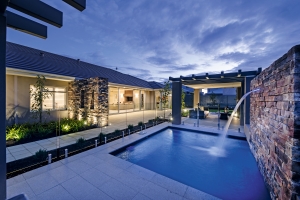
To find out more about the Midland Brick paving, block and retaining wall ranges, visit the website here.
